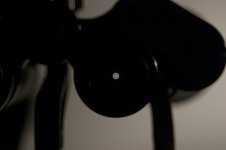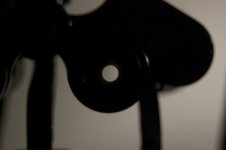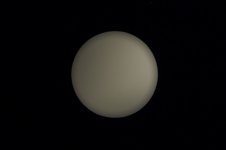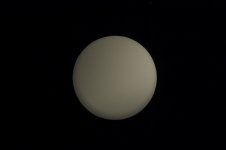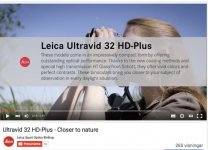elkcub
Silicon Valley, California

Ed,Chosun, Hermann, last posts regarding photographing through objectives and brightness.
...
A 8x32 should have the same light density in the image as an 8x42 at full aperture, otherwise we could not reasonably use them, they would always be much darker than the 8x42s - which is only the case when our pupil size becomes bigger than the exit pupil. Or am I missing something here. I don´t see yet what stopping down to 2.5mm would improve.
Tobias,
To keep this as simple as possible, your photographs appear to simulate a nighttime comparison when the observer's pupils are open to at least 42/8 = 5.25 mm. Under those conditions the 8x42 Leica transmits 72% more light than the 8x32 model (5.25^2/4^2 = 1.72), which would account for why its camera image is brighter. The comparison is most appropriate for astronomers.
Following the same reasoning, birders operating under daylight conditions typically have 2-3 mm pupils. Hence, in order to simulate such a daytime comparison, it's necessary to stop down the binoculars to a common exit pupil size, e.g., 2.5 mm. I presume this is the same stopped down condition you mentioned with regard to your own daylight observations. Perhaps you'd like to comment on whether Chosun and I are reading this correctly.
Henry has commented often about how to stop down binoculars to make similar comparisons for similar reasons.
Ed
Last edited:




